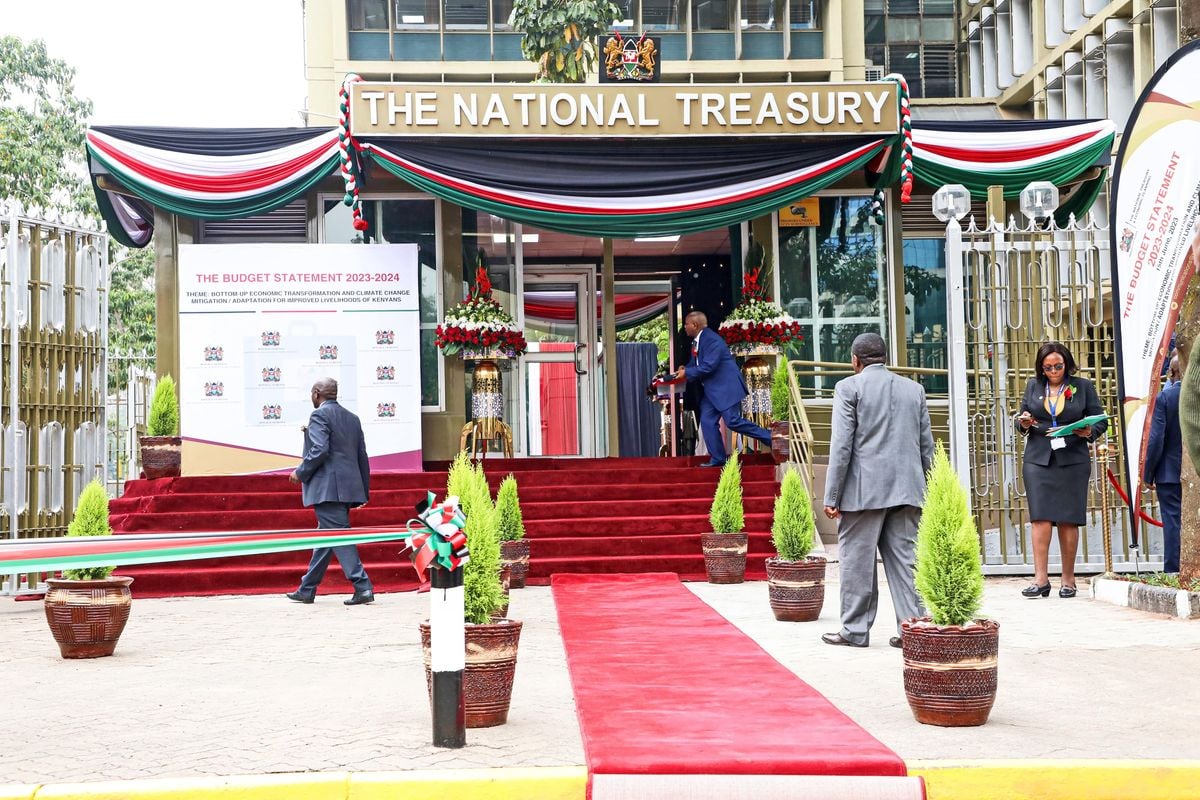
The National Treasury plans to restrict infrastructure bonds to retail investors in a new set of reforms.
If this proposal sees the light of day, banks and pension funds dominating Kenya’s fixed income market will be locked out of participation in instruments whose allure is the tax-free status guaranteed under Income Tax Act. Insurance firms and parastatals will equally be barred.
“The National Treasury intends to undertake reforms in the restructuring of the primary market activities to reduce borrowing costs and promote market activity. To manage competition between tax-free infrastructure bonds and Treasury bonds, it may be beneficial to restrict infrastructure bonds to retail investors”, the National Treasury says in the Budget Summary for 2024/25 tabled before the National Assembly on April 30.
This consideration makes for an interesting development that should stir up debate in Kenya on the state of the fixed-income market and what can be done to crowd in more retail investors to participate.
First, there is a strong basis for the argument being tabled by the National Treasury in seeking to restrict participation in attractive infrastructure bonds to retail investors.
Kenya’s fixed-income market is dominated by institutional investors with commercial banks and pension funds commanding 45.75 percent and 29.44 percent of holdings respectively. Such a concentrated investor base undermines competition at auctions and increases the susceptibility of the market to price collusion by the few dominant players.
Fixed income markets are supposed to ensure that both the sovereign and corporates can raise financing at a rate that does not ‘break the bank’. In a market where price collusion is a real risk this is undermined.
Not only does Kenya’s fixed income have a challenge with abysmal participation by retail investors, but it also suffers a shallow institutional investor base with insurance firms and parastatals at a distant 7.15 percent and 5.25 percent of holdings in that order.
While it is necessary to remedy the fixed-income market, restricting infrastructure bonds to retail investors is a poorly thought proposal that will misfire on the government if adopted.
In 2017, Kenya made a bold attempt at liberalising the fixed-income market to rope in the masses. It was a brilliant undertaking dubbed M-Akiba, a retail infrastructure bond issued by the government with a view to providing an avenue for ordinary Kenyans to unlock attractive gains for their saving while widening the pool from which the State could raise domestic financing.
I believe the experience from M-Akiba should be our guide as to how successfully restricting infrastructure bonds to retail investors could be.
M-Akiba pilot phase kicked off in March 2017 and saw 102,632 investors register through their mobile money accounts with the government raising the targeted Sh150.0 million. This success of the pilot phase, however, failed to be replicated when the instrument was formally launched three months later. Against the targeted Sh1.0 billion, only Sh247.0 million was raised with 303,534 investors having registered.
The Treasury made the second stab at M-Akiba between February 25, 2019, and March 8, 2019, and raised Sh197.0 million against the targeted Sh250.0 million, attracting 82,829 new registrations. This was a 79 percent performance rate.
The lesson
The retail investor market may be good for small ticket issuances, as seen in the success registered for both the pilot Sh150 million target and the second Sh250 million target, but will likely struggle to punch within the desired weight in the event of large ticket issuances, which is usually the case with infrastructure bonds, as was the case in the Sh1 billion target registering just 24.7 percent in performance.
My view is that targeting the retail market certainly points to the right trajectory from a medium to long-term perspective but there is a need to chart a path that midwifes the process through which Kenya’s fixed income market arrives at the desired destination.
Perhaps there is a case for approaching the retail market through structured vehicles akin to collective investment schemes that aggregate investors and make the investor journey to the fixed-income market easier than the route where the State targets a mass of unsophisticated investors as individuals.
The structured vehicles could provide the much-needed hand-holding as retail investors familiarise themselves with what is a relatively complex asset class.
Of course, some would argue that the government could simply float multiple small-ticket infrastructure bonds to align with the retail investor dynamics. However, the challenge here is it will have the net effect of creating multiple fragmented debt instruments, a situation that Kenya is trying to steer away from through benchmark issuances.
A fragmented market further complicates the challenge of liquidity in the secondary market, something Kenya is also trying to address not only through greater focus on benchmark bonds but also through the adoption of an auction calendar that provides forward guidance to the market.
The State has relied on infrastructure bonds as an avenue to attract external inflows and countervail macroeconomic pressures such as the depreciation of the shilling. The best case in point is the February 2024 issuance that sought Sh70 billion yet ended up attracting Sh288.7 billion and has been credited, in part, with the shilling from the wild depreciation in 2023.
Restricting participation in infrastructure bonds risks spooking the markets and undermining the extent to which the instruments can play this role.









